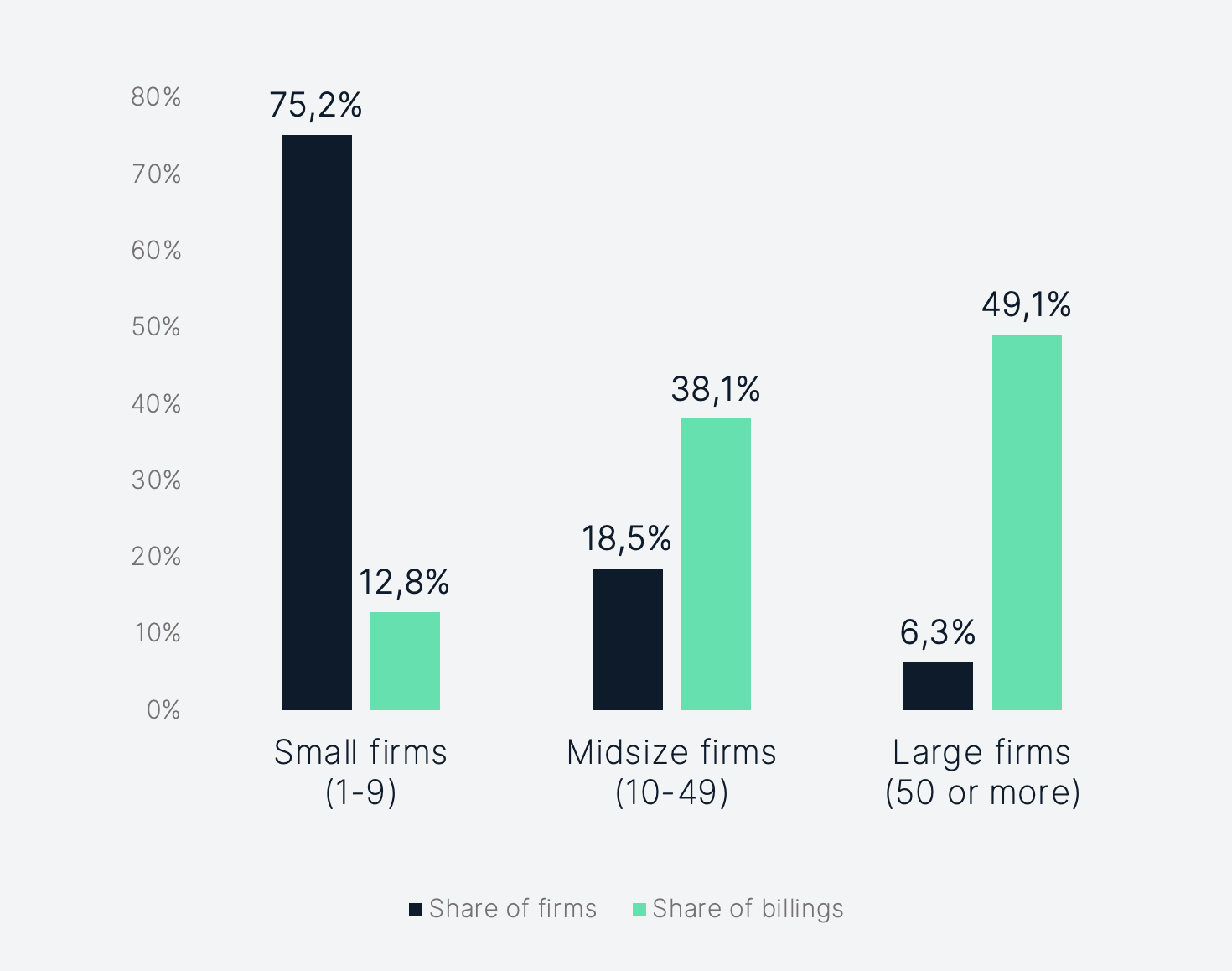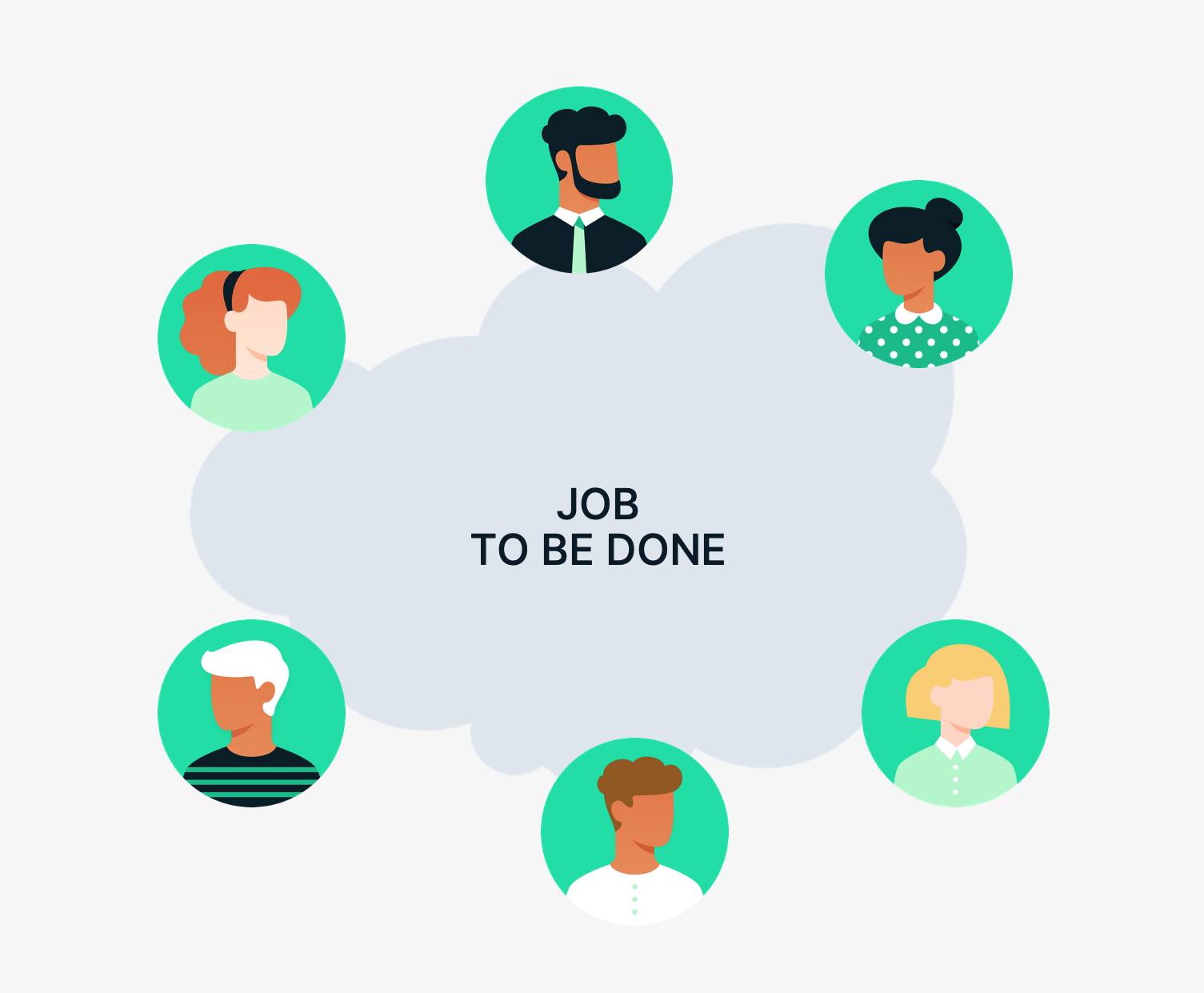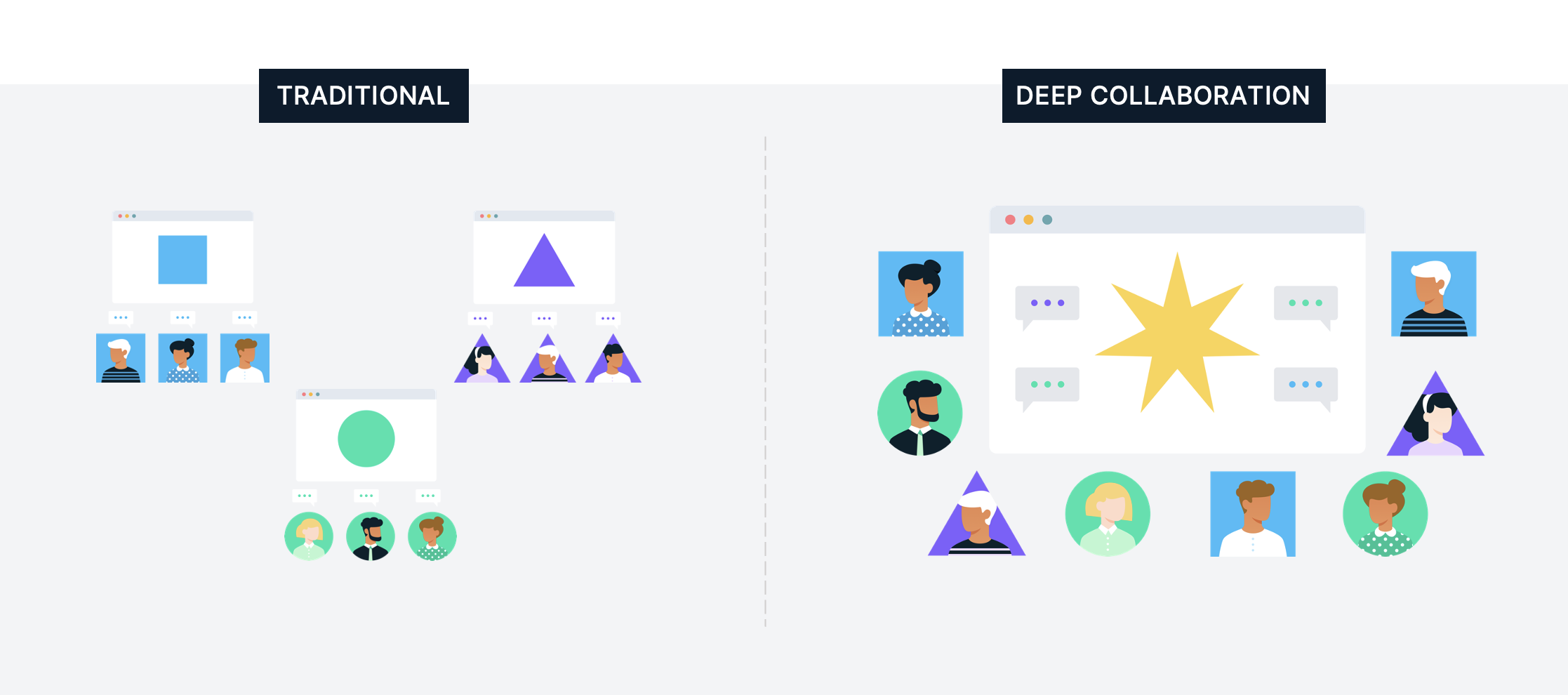Deep Collaboration in Qonic
Technology has made a significant impact on many industries worldwide, and collaborative workspaces are no exception. Platforms like Google Docs, Slack, and Zoom have become increasingly popular, revolutionizing the way we work. However, the Architecture, Engineering, and Construction (AEC) industry has yet to catch up with these changes, as it is still using on-premises software programs that are large and monolithic.

The AEC industry is inherently collaborative, involving multiple stakeholders, from within and across different teams and companies. While large firms are responsible for most of the market share in terms of billings, almost 75% of AEC collaborators are dispersed across many small firms. Additionally, only 30% of AEC collaborators are in the office, while the rest work in the field. Therefore, having true collaborative design tools that can drive productivity and creativity will significantly impact the industry.

From persona-based to jobs-to-be-done-based
For many years, the standard for software and user experience design was to focus on user personas. A user persona is a fictitious yet realistic representation of the target user. It is a key tool in a user-centered design process, and is used to drive important product development tasks.
The traditional BIM software programs are built around the needs of a specific persona, such as Autodesk AutoCAD, Revit, Civil3D, and ArchiCAD. These tools are all laden with a robust set of tools to help the respective target user do their job. BIM software companies offer a suite of tools, in which each tool offers a unique feature set designed with a specific user persona in mind.

The downside of this approach is that it becomes less user-friendly for non-experts, with a steep learning curve. Moreover, the software lacks proper collaboration tools since the primary focus was not on cross-functional collaboration. Collaboration often involves the tedious process of exchanging files via email or a common data environment (CDE), creating friction that holds back other personas from joining the design process, and undermining the experience of designers working together themselves.
A different way of looking at user-centered software design is through the Jobs-to-be-Done (JTBD) framework. Instead of building software programs for specific target personas, the JTBD approach focuses on what outcomes users want to achieve. It is based on the idea that whenever users “hire” a product, they do it with a specific job in mind.
People don't want to buy a quarter-inch drill, they want a quarter-inch hole. – T. Levitt

By focusing on the JTBD from the start, the resulting product caters to each persona involved in job-to-be-done of designing and constructing a building, from architects to facility managers, project developers, and owners, with a heavy emphasis on collaboration.
Deep collaboration
The term “deep collaboration” is often coined for the emerging category of products that are built JTBD-first. These products integrate productivity and collaboration features into a single platform, dedicated to accomplishing a specific cross-functional task. Rather than doing work in one place and discussing it across multiple scattered places, deep collaboration provides a unified space to construct and collaborate around a particular job-to-be-done. Examples of deep collaboration software are Figma and Salesforce's acquisition of Slack for the design and sales productivity industry respectively.

So, what exactly is deep collaboration software, and what sets it apart from other collaboration tools? Let's explore three key features that make deep collaboration software stand out: a JTBD-specific collaboration toolset, a JTBD-specific workflow, and robust and granular permissions and approvals.
Firstly, deep collaboration software has JTBD-specific collaboration, embedded next to the work itself. Deep collaboration software goes beyond simple file sharing. This means that users can collaborate in real-time, with all the necessary tools and features at their fingertips. For instance, multi-user collaboration, commenting functionality, easy onboarding, and easy data sharing are all included as standard features.
Secondly, deep collaboration software has a JTBD-specific workflow. Unlike generic horizontal workflows found in most traditional CAD software, deep collaboration software offers JTBD-specific workflows that cater to a specific customer segment. This approach allows for a more customized and personalized experience that meets the needs of the user. By collaborating around a specific JTBD, deep collaboration software can streamline workflows
Thirdly, deep collaboration software offers robust and granular permissions and approvals, enabling personas from various departments within the organization, and across organizations, to access particular features. This ensures that everyone has the access they need to collaborate effectively and efficiently. By providing customized permissions, deep collaboration software can also improve security, making it easier to manage sensitive data and information.
JTBD-specific collaboration in Qonic
Revolutionizing the design and construction process through collaboration has always been the ultimate goal. However, it has always been a challenge to involve non-technical and non-BIM experts in the process.
Enter Qonic - a cloud-based deep collaboration software that allows all team members to work together seamlessly, even those without technical expertise.
The software is built using technologies like WebGL and streaming, making it truly browser-supported. It means that users can view models directly in the browser without needing complex local software or having to forward and open files. Sharing designs is as simple as sending a link, enabling the entire team to work together on models and design data, and add comments directly in the design without disrupting the flow of others.
One of the most significant advantages of Qonic is that users can edit all models in the cloud, meaning that all users are continuously collaborating on the same design. This contrasts with traditional CDE-based workflows, where teams store all their files in a shared folder or CDE, which results in notifications whenever a coworker makes revisions. Moreover, there are complex naming conventions in place to ensure that everyone is using the correct versions of the files. In Qonic, revisions are inherently built into every model, eliminating the need for complex files such as "version 1" or "version final." It also allows users to retrieve the complete history of all changes at any time.
Collaboration in Qonic extends beyond the team and across different companies. Role-based permissions ensure that each user can access the files, folders, and applications they need without security risks. It's easy to share designs and collaborate with anyone involved in the project, regardless of location or technical expertise.
What about data ownership and agency?
The rise of cloud-based collaborative tools has brought a new level of convenience and productivity to our work lives. However, with these benefits come some potential drawbacks that can impact data ownership and agency. Centralized data storage on servers means that users may not have full control over their data, and in the event that a cloud service shuts down, any data created using that app could potentially be lost.
At the same time, traditional applications offer a higher degree of data ownership, but lack the collaborative capabilities that are so crucial to modern workflows. So, is it possible to have the best of both worlds?
We believe that the answer is yes, and both are not at odds with each other. This category of software is often coined as “local-first software”, which combines the convenience and collaboration of cloud-based tools with the ownership and control of traditional applications. Local-first software is built on a set of principles that prioritize user control, privacy, and data preservation. These principles include:
-
Offline functionality: Local-first software is designed to work seamlessly even when an internet connection is unavailable. This means that users can continue to work on their projects regardless of their location or connectivity status.
-
Cross-device collaboration: With local-first software, users can collaborate across multiple devices without losing data or context. Changes made on one device can be synced across all other devices, ensuring that everyone is always up-to-date.
-
Long-term data preservation: Local-first software is designed to preserve data for the long term, so users can access their projects and data even years after they were created.
-
User control of data: With local-first software, users have complete control over their data. They can choose where to store it, how to back it up, and who to share it with.
Join our community
Sign up
to Qonic and start exploring.